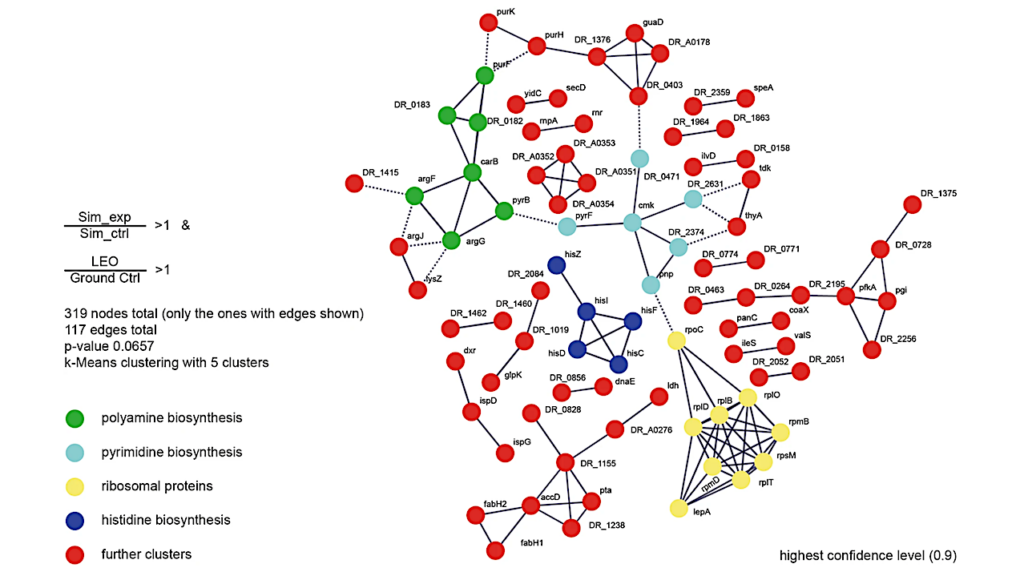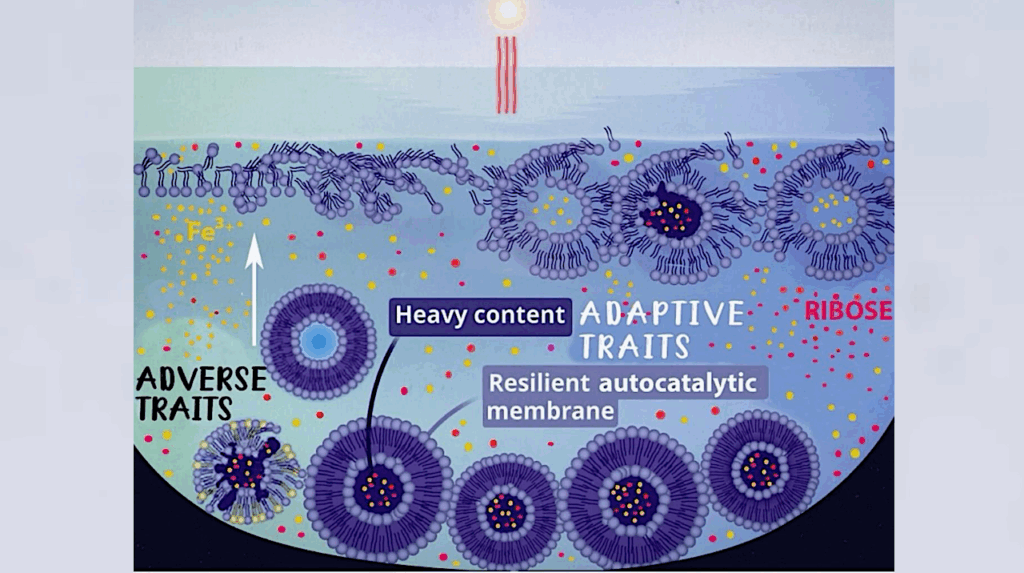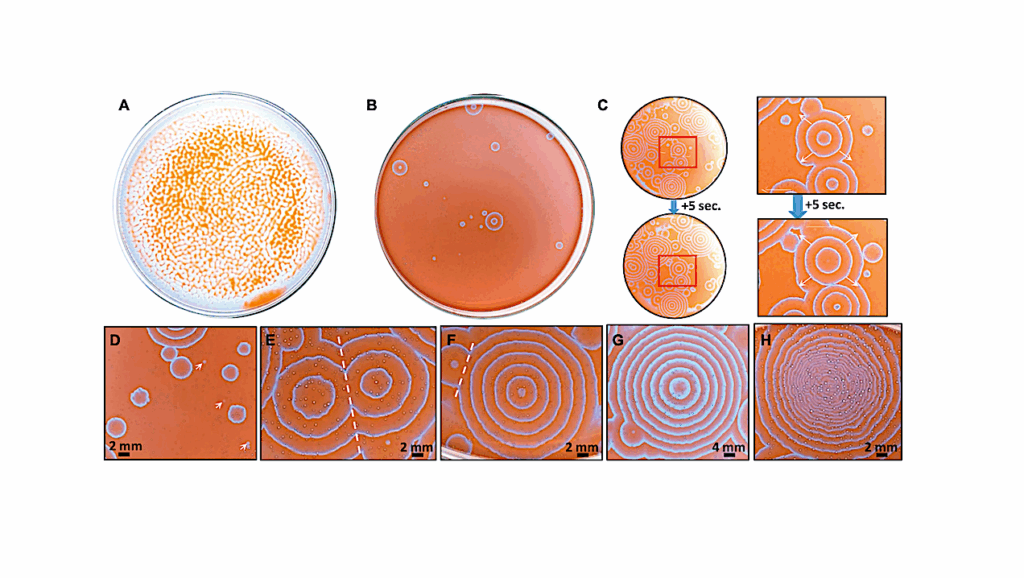Molecular Repertoire Of Deinococcus Radiodurans After 1 Year Of Exposure Outside The International Space Station Within The Tanpopo Mission

Background
The extraordinarily resistant bacterium Deinococcus radiodurans withstands harsh environmental conditions present in outer space. Deinococcus radiodurans was exposed for 1 year outside the International Space Station within Tanpopo orbital mission to investigate microbial survival and space travel. In addition, a ground-based simulation experiment with conditions, mirroring those from low Earth orbit, was performed.
Methods
We monitored Deinococcus radiodurans cells during early stage of recovery after low Earth orbit exposure using electron microscopy tools. Furthermore, proteomic, transcriptomic and metabolomic analyses were performed to identify molecular mechanisms responsible for the survival of Deinococcus radiodurans in low Earth orbit.

Comparative protein-protein network analysis. Proteins of D. radiodurans which were more abundant after LEO exposure compared to ground control and proteins which were more abundant after exposure to simulated LEO conditions compared to corresponding non-exposed control chosen for the network. This list was uploaded to the STRING database. Network construction was performed at highest confidence level (0.9) with k-Means clustering containing five clusters. Annotation was performed according to proteins present in the clusters
Results
D. radiodurans cells exposed to low Earth orbit conditions do not exhibit any morphological damage. However, an accumulation of numerous outer-membrane-associated vesicles was observed. On levels of proteins and transcripts, a multi-faceted response was detected to alleviate cell stress. The UvrABC endonuclease excision repair mechanism was triggered to cope with DNA damage. Defense against reactive oxygen species is mirrored by the increased abundance of catalases and is accompanied by the increased abundance of putrescine, which works as reactive oxygen species scavenging molecule. In addition, several proteins and mRNAs, responsible for regulatory and transporting functions showed increased abundances. The decrease in primary metabolites indicates alternations in the energy status, which is needed to repair damaged molecules.
Conclusion
Low Earth orbit induced molecular rearrangements trigger multiple components of metabolic stress response and regulatory networks in exposed microbial cells. Presented results show that the non-sporulating bacterium Deinococcus radiodurans survived long-term low Earth orbit exposure if wavelength below 200 nm are not present, which mirrors the UV spectrum of Mars, where CO2 effectively provides a shield below 190 nm. These results should be considered in the context of planetary protection concerns and the development of new sterilization techniques for future space missions.

Scanning and transmission electron microscopy (SEM and TEM) images of D. radiodurans cells recovered after LEO exposure in complex medium. a, b SEM images of recovered D. radiodurans cells after LEO exposure. c, d TEM images of recovered D. radiodurans cells after LEO exposure. e, f SEM images of ground control D. radiodurans cells. g, h TEM images of ground control D. radiodurans cells
Molecular repertoire of Deinococcus radiodurans after 1 year of exposure outside the International Space Station within the Tanpopo mission, microbiome (open access)
Astrobiology








